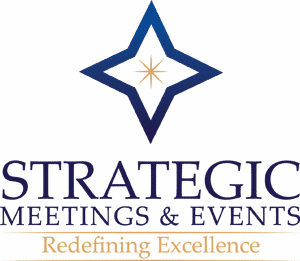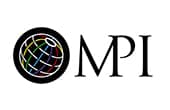Planners Partnering With Suppliers – Learning Curve
By Angela Chiarello
Planners must understand learning objectives and partner with suppliers to create successful and effective training meetings.
Whether it’s a three-hour program or a three-day event, training meetings stem from a specific need. Learning new skills, achieving certifications, understanding new programs or discovering new products requires a positive learning environment. A variety of purposes and desired outcomes indicate that a positive environment for one may not work for another.
 Still, some topics are intrinsic to all training meetings: the importance of defining the objectives; the comprehension of content and the acquisition of a trainer before the booking of space. This may be an epiphany for some and impossible for others to grasp. An immediate change in the way everyone does business isn’t possible, but understanding what works and finding ways to incorporate proven tactics into events will move planners, their training meetings and the industry forward.
Still, some topics are intrinsic to all training meetings: the importance of defining the objectives; the comprehension of content and the acquisition of a trainer before the booking of space. This may be an epiphany for some and impossible for others to grasp. An immediate change in the way everyone does business isn’t possible, but understanding what works and finding ways to incorporate proven tactics into events will move planners, their training meetings and the industry forward.
Define and determine the objectives. The best way to define and determine objectives is to begin with the end. Planners and suppliers stress the importance of understanding a training meeting’s objectives from the start. The most important question to ask is, “Why are we meeting?”
Many trainers and venue officials are surprised that they encounter so many planners who don’t know the objectives of the meetings they’re booking. In some cases, the planners are—or feel they are—too low in the organizational hierarchy to be told of the meeting’s objectives and, because of that, weren’t comfortable asking. Other trainers speculate that planners’ plates are just too full.
Barb Taylor Carpender, CMM, a veteran trainer and MPI’s 2006 Supplier of the Year, offers a logical argument for the importance of objectives and how to communicate with those higher up who may not immediately understand the value of defining and sharing goals.
“It makes you look better to understand the need and ask for objectives,” Carpender says.
She also says it’s easy to ask what the top things the meeting’s stakeholders want attendees to walk away with.
“Doesn’t that make it easier to design the events?” Taylor asked. “It also makes it easier after the meeting to go back and say, ‘Based on the objectives, here is the outcome.’ It’s about understanding that there are tools out there that will not only advance our industry—and therefore ourselves—but also make our lives easier.”
Understanding the objectives not only makes the planning easier, but provides the tools necessary to easily measure success afterward.
Get to know the attendees. It sounds trite, but do the homework. Once planners know why a group is meeting, they should determine who will attend and what they need to meet the objectives the owners have set out.
 “Possibly more [attendee] research is needed before training rather than any other [kind of meeting],” said Tyra Hilliard, Esq., CMP, associate professor at the University of Nevada, Las Vegas William F. Harrah College of Hotel Administration’s Tourism and Convention Department. “What is their existing knowledge; how will they apply the knowledge?”
“Possibly more [attendee] research is needed before training rather than any other [kind of meeting],” said Tyra Hilliard, Esq., CMP, associate professor at the University of Nevada, Las Vegas William F. Harrah College of Hotel Administration’s Tourism and Convention Department. “What is their existing knowledge; how will they apply the knowledge?”
Knowing audience demographics, group history and past training experiences remains vital for creating successful training events. Group history will tell what has worked in the past—and more importantly, what hasn’t. Planners can use attendees’ previous training experiences to understand what kinds of training have been effective and gain insight into learning styles. Keep in mind generational and cultural differences when analyzing demographics.
Gathering information about attendees can be done in a variety of ways. Depending on the type and size of the group, surveys, focus groups and advisory boards can be effective. Planners can offer incentives for people willing to give their time and opinions about needs and expectations. But planners should avoid going to these lengths if they don’t intend to incorporate the suggestions.
The information planners collect about attendees will be invaluable internally and externally.
“A really good planner will tell me who I’m talking to, what they think, what they like and where my session fits into the broader program,” said Jeffrey Cufaude of Idea Architects in Indianapolis.
Create strong partnerships. Suppliers have an interest in a training meeting’s success. Unfortunately, some planners treat suppliers more like vendors than partners and don’t share a meeting’s objectives with them.
“I don’t think it’s an intentional withholding,” Cufaude noted. “In some cases, [planners] don’t really get why it would be of value.”
Joan Eisenstodt, chief strategist for Eisenstodt Associates in Washington, D.C., and an MPI Potomac Chapter member, insists that partnerships are essential.
“You can plan the best program but if the audiovisual or facility isn’t working, the program won’t work. It is important that everyone be a part of the conversation,” said Eisenstodt, a veteran trainer and meeting planner.
John Potterton, CMP, director of sales for the Summit Executive Centre in Chicago, explains that once the planner is connected to the program and the ideas the host organization is trying to achieve, it’s time to start talking to partners.
“It is the planners’ role to say [to supplier partners], ‘I need to tell you what we’re all about. I’m telling you this because I want you to understand what we’re trying to do and I want you to be a partner,’” said Potterton, an MPI Chicago Area Chapter member.
Team up with trainers. Planners must consider the expectations of the meeting sponsor and the attendee when selecting trainers.
 “Good trainers have to be ready to shift the focus and pace depending on the group,” said Hilliard, a longtime MPI member. “The flexibility of the trainer is key. Trainers also have to have an extremely good rapport with people. You need people to feel comfortable enough to ask questions and discuss.”
“Good trainers have to be ready to shift the focus and pace depending on the group,” said Hilliard, a longtime MPI member. “The flexibility of the trainer is key. Trainers also have to have an extremely good rapport with people. You need people to feel comfortable enough to ask questions and discuss.”
What are trainers looking for from planners?
“My ideal planner relationship is with someone who is open to suggestions,” Eisenstodt said. “Let’s sit down and talk. I hope they’ll be open to me and my ideas and willing to go to bat for the audience, the objectives and the outcome.”
Create the right environment. Many planners believe that conference centers are getting it right. What are they doing differently and what can savvy hoteliers and other facility managers do better?
Because the facilities are generally designed with learning in mind, they offer a different level of comfort and service. In particular, the International Association of Conference Centers’ (IACC) stringent guidelines ensure that any IACC-approved facilities will be effective learning environments.
“I don’t want to attack hotels because we all depend on them,” Hilliard said. “But hotels have traditionally only looked at square footage. For training meetings, it takes more than adequate space. Hotels are good places, and I keep hoping that they will eventually catch on to what conference centers already understand and focus on the learner.”
Of course, conference centers aren’t always available to all groups. How can planners find facilities that are accommodating to the special needs of training meetings?
“Ask questions and you’ll find out quickly if there’s any interest on the part of the venue,” Potterton advised. “Tell them about the program, what you want to accomplish and that you want to make them a partner. Ask if you can sit down and talk about how to work together to make this experience successful.”
The hotels that are focused on educational meetings offer tools in the form of props, configurations and staff to help planners meet their training goals.
“We’re in a position to observe successes and failures, and we should share those,” said Keith A. Sexton-Patrick, CMP, director of convention services/destination services at Mohegan Sun in Connecticut. “Of course we want [planners] to come back, but we also want them to be successful.”
Sexton-Patrick and his team know their property well and help planners select the space that will best meet their needs. They know which rooms are quietest and understand all of the elements that can impact learning.
Beyond the facility, multiple factors contribute to a positive learning environment. Room setup, lighting, sound and furniture are all crucial. By teaming with trainers and venues, planners have a better chance of minimizing their risk and maximizing their training’s effectiveness.
“The ultimate goal is to create a positive environment where people are open to learning,” Hilliard said.
Understand adult learning. Shelves of books have been published on the topic of adult learnings, but for the purpose of this article, there are a few important concepts to remember when planning a training event.
Adults learn in different ways, so it is important that the program, the trainer and the environment offer enough variety so that all learning styles are considered and the majority of attendees will learn effectively.
“If the trainer only trains in one way, they’ll probably only reach a portion of the audience,” Hilliard said. “Information has to be presented in a variety of ways so that everyone can get it.”
Cufaude explains that adult learners tend to want to incorporate their experience into the learning conversation.
“They have a context that they want to bring into the content,” he said. “They’re often trying to make a connection between what the speaker is saying and their personal experiences. Even for adult learners who are more conceptual—they need to see the relevance of the subject matter.”
Incorporate interactivity into training. Beyond making connections, learners need opportunity to apply, interact with and test the material.
Cufaude offers the example of a typical training session where attendees are talked at. Although they are experiencing the information, they’re not given the opportunity to apply it. Adding an interactive period creates the laboratory for attendees to test what they’ve learned and enables them to replicate ideas in practical, applicable situations.
Interactivity is also an easy, productive way to break up monotony and avoid boredom.
“Learning should be fun,” said Bonnie Wallsh, CMP, CMM, chief strategist of Charlotte, N.C.-based Bonnie Wallsh Associates LLC. “It shouldn’t be punishment.”
Wallsh, a meetings management professional, trainer and an MPI Carolinas Chapter member, also stresses the value of peer interaction and problem solving. Interactive group work allows attendees to discuss applications with their peers. She says attendees can often learn as much from each other as they can from the instructor.
Create a flexible—and manageable—schedule. Cufaude says it is a mistake for people to underestimate the implications of schedule times. Just as it’s difficult to book space without knowing the objectives or agenda, it’s a bad idea to plan an agenda before really thinking about learning objectives and working with the trainer on content and programming, he adds.
“I think about it in terms of how much time is needed to meet these objectives,” Cufaude said. “If you’ve got rigid time blocks, what’s the best content to fit into that. Or, based on content, what timing is best?”
 Even when the scheduling has been decided, it’s important to keep the program as fluid and flexible as possible
Even when the scheduling has been decided, it’s important to keep the program as fluid and flexible as possible
“It’s hard to decide ahead of time when a group should break,” Wallsh said. “It depends on the flow and the group. Hotels usually want a specific time, but I need more flexibility. One of the things I love about conference centers is that I can break when attendees need it.” Joan Buck, CMP, CMM, president of eMeetingExperts, reminds planners to consider something else when scheduling training events: information overload.
“It’s important to find a balance between training and free time,” said Buck, an MPI Chicago Area Chapter member. “I like to get my groups off the property, perhaps for a dine-around. Clients often want evening study sessions. This is good in theory, but attendees don’t feel like they have any time to themselves.”
Christy Lamagna, CMP, CMM, CTSM, president and chief strategist for Strategic Meetings & Events, says planners should schedule plenty of breaks and not assume that having eight hours in the day equates to eight hours of learning.
“People can only absorb so much, so if the sessions continue, you not only lose the audience’s attention, but also their respect and enthusiasm for the program,” Lamagna said.
Food for thought. Keeping attendees well-fed sounds easy, but it doesn’t always happen.
“Healthy refreshment breaks are important,” Wallsh said. “They get attendees energized and allow them to keep learning.”
The key is to move away from the old ways of feeding attendees and consider nutrition and brain function.
“We know better,” Cufaude said. “What are [we] feeding people? How do we sustain them better? We’re not doing what we know is right from a nutritional standpoint.”
Many planners appreciate the healthier mix of options and all-day availability at conference centers. All sides should consider more healthful options, less sugar and smaller portions. Venues can offer healthier choices and planners should request them. Sexton-Patrick, Mohegan Sun’s events services manager, asks planners what activities are scheduled and helps create an optimal menu based on those activities.
Evaluate evaluations. Evaluations are vital for determining the success of a training event. It’s most important, Carpender says, to design the evaluation to measure stated objectives. Start by including those objectives on the assessment. This is an often overlooked but easy step toward more useful evaluation data.
“We often ask the same questions,” Cufaude added. “This would be OK if we were asking the right questions. Usually, the questions have more to do with satisfaction rather than learning. A good question might be, ‘What percentage of this content will you be able to do something with?’ You should be evaluating what you’re trying to accomplish.”
Another important objective to consider: Is the training applied after the event? Lamagna suggests a follow-up survey several months after the event to assess how well the training went and how well it ‘stuck’ so planners can adjust courses at future programs.
Consider the training’s ROI. If you’re going to spend any money or effort on training, you need to measure it, says Jamie McDonough, director of meeting and training services for Fusion Productions and an MPI Western New York Chapter member.
“There is no sense in doing it if there is no outcome,” he said. “There is a lot of mandatory training happening, but it’s lip service unless you can say the training is actually applied.”
Don’t be intimidated by the thought of looking for hard-dollar return on training investment. By definition, training is about teaching. If attendees learned the skill or program then the event was successful. The trick is to show measured success to the people who matter. By developing objectives at the beginning of the planning process, planners identify what will make that training event a success and make it easier to measure in the end.
“If you do the due diligence and report back, you’ll earn respect,” McDonough said. “All of the sudden you’ve elevated your role.”
Sidebar: Training’s Best Practices
Research important training topics such as learning styles, generational and cultural differences, positive learning environments and nutrition. This knowledge will be useful in future projects.
Be an attendee in order to understand what attendees are experiencing and how to meet their needs.
PowerPoint should be a supplement—not the entire program. Otherwise, why hire a trainer?
Mix attendees with different learning styles and ages. They’ll learn from each other and be more productive in the changing professional environment.
Planners should know what the trainers know. If planners don’t have a basic understanding of what goes on, they can’t plan a good training program.
Avoid meals in ballrooms or meeting rooms. Dedicated dining rooms or restaurants break up the day, get attendees out of the meeting rooms and give them a breath of fresh air.
Don’t waste people’s time. Before asking them to travel or spend days in training, make sure it is the best method for meeting objectives.
Offer small rewards such as $5 gift cards for instant recognition. Trainers can use these to get attendees involved and keep them motivated.
Respect attendee needs. Allow longer breaks for checking e-mail, making phone call and keeping in touch with the home and home office.
Give them the time they need to take care of themselves and they’ll reward you with more commitment and attention.
Keep things easy, organized and distraction-free. Have materials set before they arrive in the room to avoid class disruptions.
Try a motivating speech rather than a motivational speaker. Training attendees are motivated by those with experience in the same field, such as their peers and their leaders. Give them experience they can use.
Make ground transport and food seamless—that’s what people remember.
Utilize local resources. Many towns have colleges. Tap those schools for expertise on your subject. Doctoral students and professors are often affordable and well qualified.
Don’t be afraid to ask questions. This gives you the ability to ask better questions of and work more efficiently with the trainer. Never make assumptions. Listen to responses.
Reward training completion, and schedule refresher courses or follow-up questions. Training is not a magic bullet process; to schedule a class and assume folks “get it” is foolish.
Share training objectives with attendees before, during and after the meeting. They need to know what they need to know.
Try giving trainers a list or menu of what’s available at the facility rather than asking for their requirements and matching it to the facility’s offerings. Perhaps the facility has great amenities the trainer can utilize that he or she hadn’t considered.
Tags: Planners Partnering With Supplier – Learning Curve, Learning Curve, Event Planning, Event Planners, Strategic Planners, Strategic Events, Corporate Meetings, Corporate Events, Meeting Professionals International, MPI





